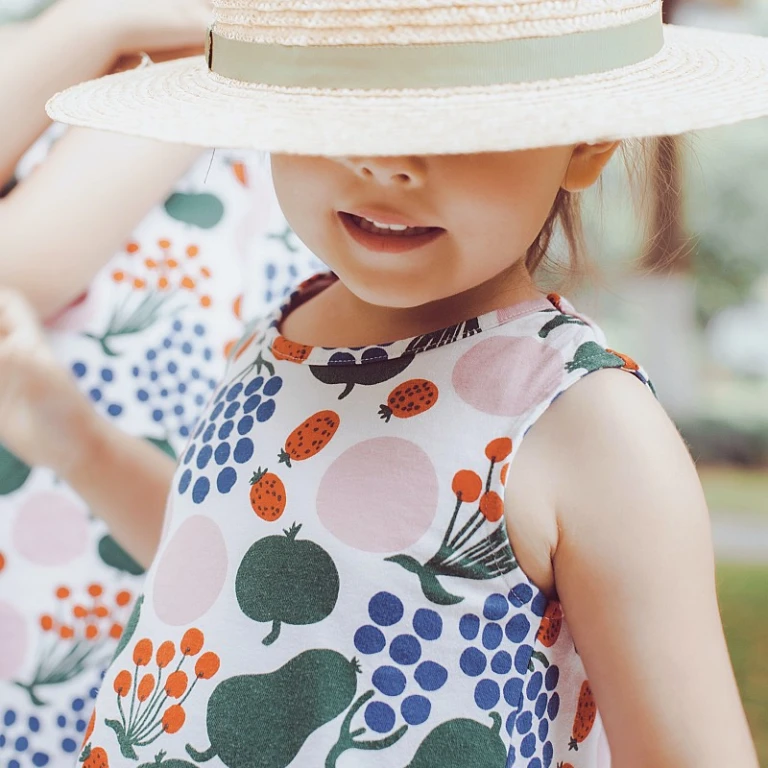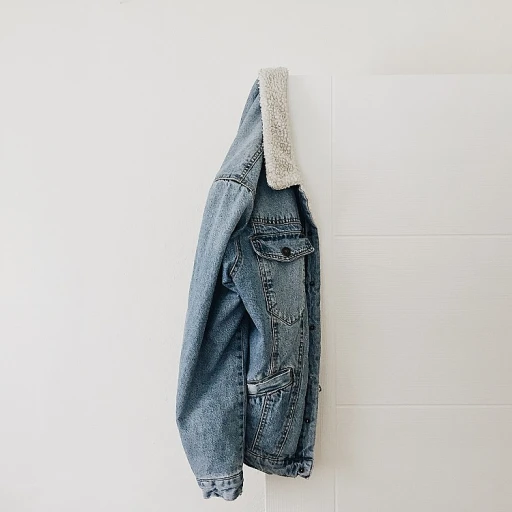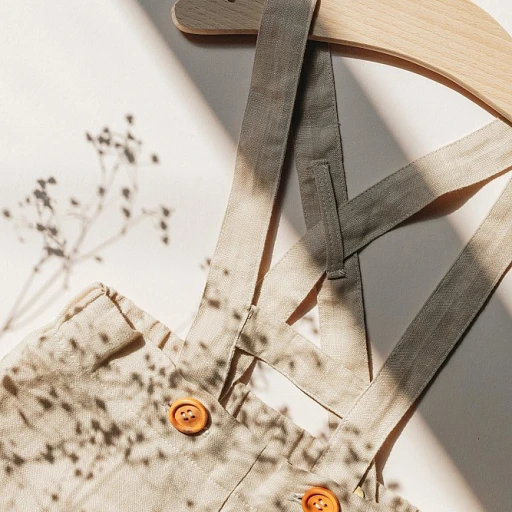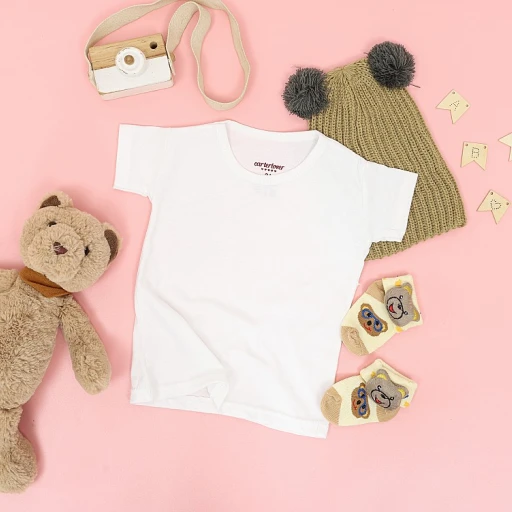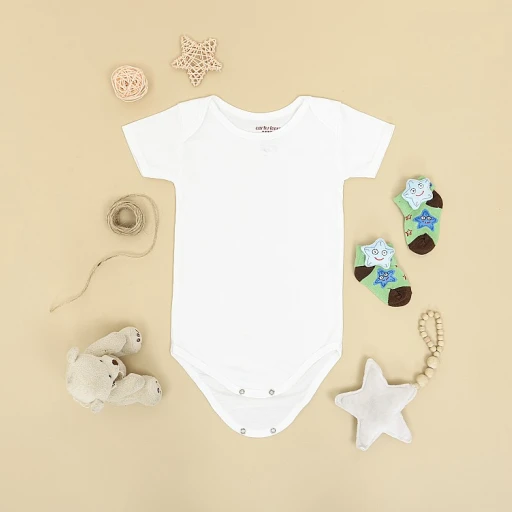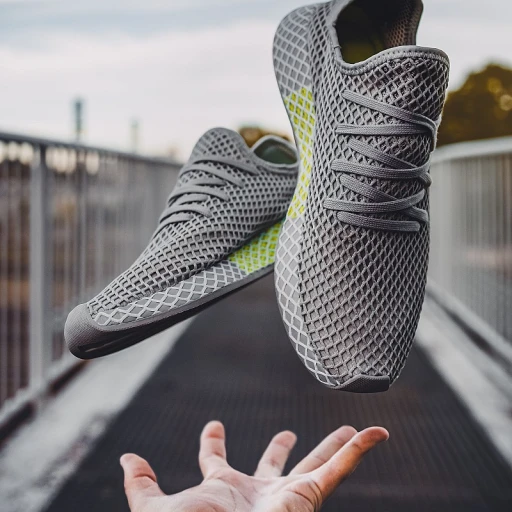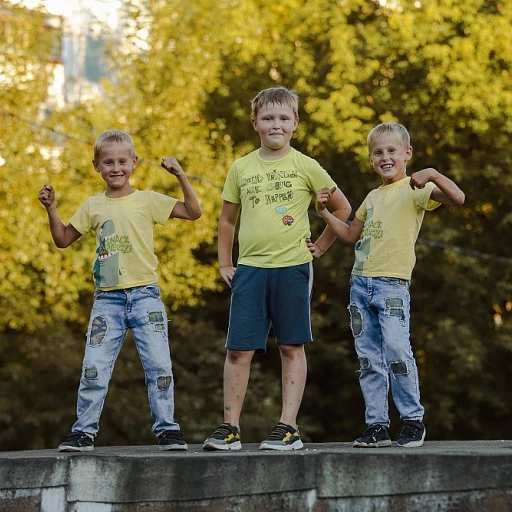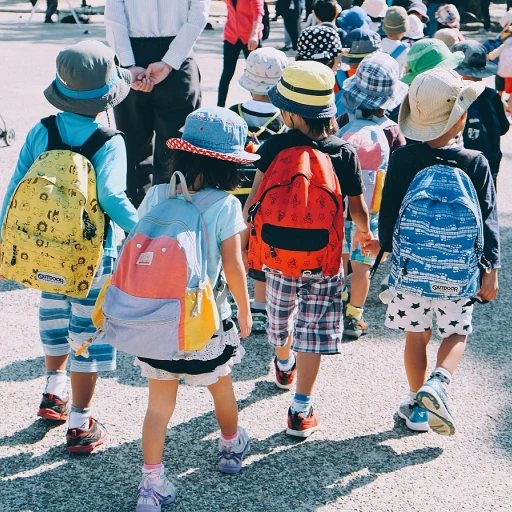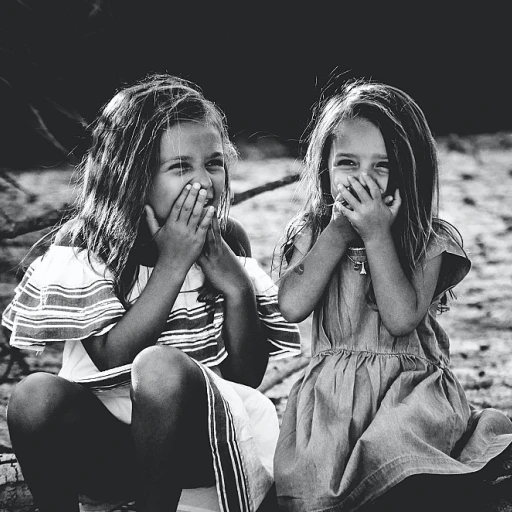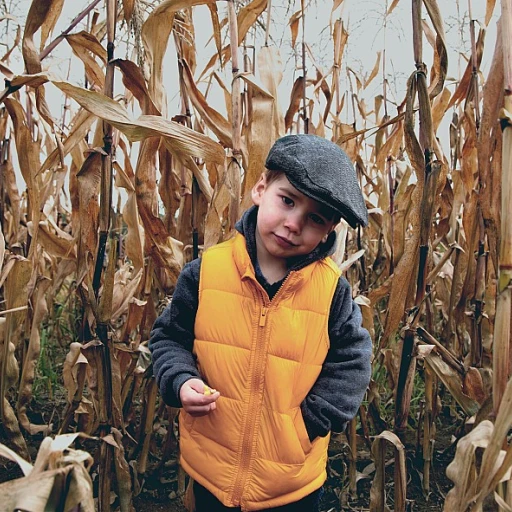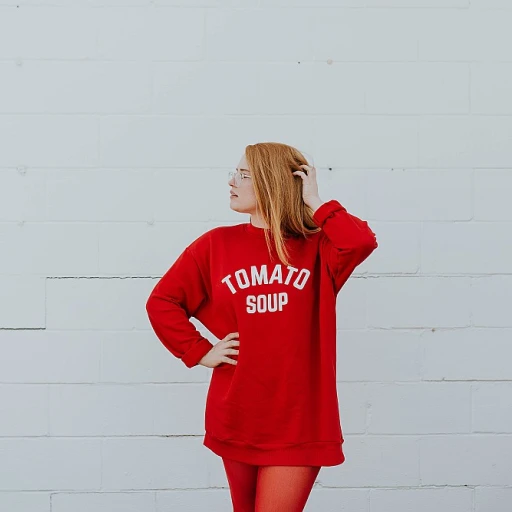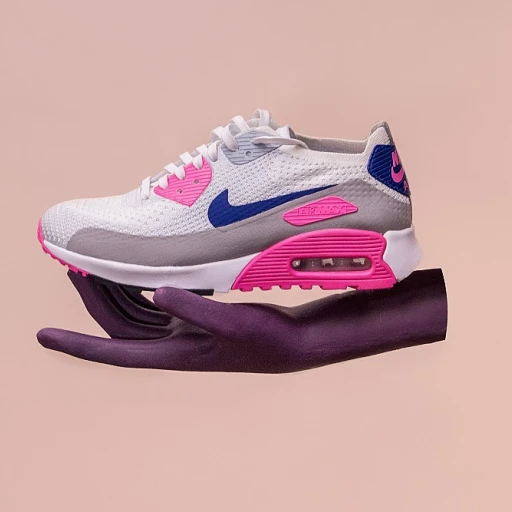
Understanding size 100 in baby clothes
What does size 100 mean in baby clothes?
If you've ever asked, what size is 100 in baby clothes, you're not alone. It can be confusing! Size 100 is a popular children's clothing size, often found in European and Asian brands. To break it down, size 100 generally corresponds to a child's height in centimeters. So, if your toddler is around 100 cm tall, this is their size!
Why can't we stick to a universal sizing system?
Unfortunately, there's no single standard when it comes to sizing baby clothes, making it a bit of a challenge for parents. While a 100 in one brand may perfectly fit a 3-year-old, in another brand, it could be intended for a slightly younger or older child. For example, according to a guide on wholesale baby clothes, sizes can vary widely among different brands and regions.
How does size 100 compare to U.S. sizes?
In the U.S., baby and toddler clothing sizes are typically based on age and weight rather than height or other measurements. To find a comparable U.S. size to a European size 100, you can refer to size conversion charts. Generally, a size 100 can be equivalent to a size 4T in U.S. sizing. However, it's always a good idea to check the brand's specific size chart, as these can differ.
Size charts: converting size 100 to other measurements
Size charts: converting size 100 to other measurements
When it comes to understanding baby clothes sizes, things can get a bit confusing. Let's dive into how size 100 corresponds with various other key measurements to make it easier for parents when shopping or gifting baby clothing.
Understanding size 100 in terms of height and weight
Size 100 is a popular measurement used primarily in European countries, including Sweden. This size is typically intended for toddlers who are around 3 to 4 years old. Here is how size 100 translates in terms of height and weight:
- Height: Size 100 generally fits children who are approximately 39-43 inches (100-110 cm) tall.
- Weight: This size is suitable for kids who weigh between 31-38 pounds (14-17 kg).
It's important to remember that these figures can slightly vary across different baby clothing brands.
Converting size 100 to U.S. sizes
In the United States, baby clothes sizes are often labeled by age, such as 3T or 4T. Here's how size 100 aligns with U.S. sizing:
- Size 100 in Europe is generally equivalent to 3T-4T in the U.S. size chart.
Understanding these conversions can help parents when they come across international brands or if friends and family abroad want to buy clothes for children.
Baby clothing size charts
Different brands have their version of sizing charts, which can sometimes cause hiccups when buying baby clothes. For example, Hanna Andersson, a well-known baby clothes brand, uses the European sizing system but offers size conversion charts on their websites to simplify things for U.S. customers.
It is always a smart choice to refer to each brand's specific size chart to double-check measurements. This way, you can ensure proper fit and avoid the hassle of returns or exchanges.
The role of brands in size influences
Many popular baby clothing brands adapt size 100 to their measurements. Brands like Hanna Andersson, known for their comfortable and high-quality clothes, have size guides that beautifully elucidate the size conversions.
Specific items such as “sustainable baby clothes” from these brands often come with a comprehensive size guide to help parents select the perfect fit for their babies.
Additional resources for parents
Parents can use various online resources to get more insights into baby clothing sizes. Using a size chart or guide provided by brands, reading customer reviews, and checking out parenting forums can also offer first-hand experiences about how different sizes fit.
By understanding and utilizing size charts, parents can make more informed choices that ensure comfort and style for their children, no matter the brand or the origin of the clothing they choose.
Popular brands and their size 100 offerings
Identifying the right brands for size 100
Choosing the right brand can be a game-changer when shopping for Size 100 in baby clothes. Not all brands follow the same sizing guidelines, which can make things super confusing for parents. Here’s a rundown of some popular brands and how they tackle Size 100.
Hanna Andersson
Hanna Andersson is a go-to favorite for many parents. Their size 100 generally fits kiddos around 3-4 years old, with a height range of 37-42 inches and weighing 30-38 lbs. Known for their durability and comfy organic cotton, their clothes are a hit among parents who prioritize quality.
Carter’s
Carter’s Size 100 typically translates to 4T in their range. It’s suitable for toddlers weighing around 31-38 pounds and standing between 38-42 inches tall. Parents love Carter’s for their affordability and wide selection of cute styles.
Zara Kids
Zara Kids Size 100 caters to children aged 3-4 years, with a height of around 39-42 inches. Zara’s trendy and fashionable designs make it a favorite among parents who want their children to look stylish without breaking the bank.
GAP Kids
For GAP, Size 100 often aligns with their 4-year size. It’s geared for toddlers with a height between 39-42 inches and weighing around 34-38 lbs. GAP is known for its classic styles and reliable quality.
Uniqlo
Uniqlo’s Size 100 is designed for children aged 3-4 years. This size suits kids standing 37-42 inches tall and weighing 30-38 lbs. Uniqlo’s clothing is praised for its simplicity and comfort, making it a practical choice for everyday wear.
European brands
European baby clothes often have a slightly different sizing system. For instance, the size 100 equivalent in many European brands might fit 3Y or 4Y, depending on the brand. European sizing focuses on height more than weight, so always check the brand’s specific size guide.
Understanding brand-specific sizing is crucial for finding the perfect fit for your child. Want to delve deeper into gender-neutral wardrobes in kids fashion? Get more insights from top brands and trends.
Tips for parents: choosing the right size
Choosing the perfect fit for your little one
When it comes to baby clothes, finding the right size can be crucial. The last thing any parent wants is to buy a lovely outfit, only to discover it doesn't fit their child. Opting for the right size, particularly when it comes to size 100 baby clothes, can significantly impact your child’s comfort and well-being.
It's essential to know that baby clothing sizes can differ depending on the brand. For instance, a size 100 from Hanna Andersson might not match the size 100 from another brand. Therefore, it's always a good idea to check the brand's specific size chart before making a purchase, ensuring the clothing will fit your baby perfectly.
During the first few months of life, babies grow at an impressive rate. A key tip is to buy clothes that are a bit larger, allowing your baby some room to grow into them. According to the Parents Magazine, choosing adjustable or stretchy materials can also help accommodate this rapid growth.
Common pitfalls to avoid
One common mistake parents make is buying clothes based solely on age labels provided by manufacturers. These labels can often be misleading as every baby grows at their own pace. A better approach is to consider your baby’s height and weight. For example, a size 100 in baby clothes typically fits children who are around 39.5 inches in height and weigh around 31 lbs. Refer to a size chart for precise conversion.
Experts suggest monitoring your child’s growth periodically to ensure their clothes fit well. A snug fit can lead to discomfort and restrict movement, while overly large clothing can be unsafe, posing risks such as tripping.
Smart shopping tips
When shopping for baby clothes, always consider functionality alongside aesthetics. Look for easy-to-use fastenings like zippers or snaps, especially if you're dealing with an active toddler. Practicality can make dressing and changing your baby less stressful.
Additionally, pay close attention to fabric choice. Soft, breathable materials such as cotton are generally recommended for baby clothing. Your baby's skin is delicate, and choosing the right material can prevent irritation.
Finally, don’t hesitate to ask for advice from other parents. Real-life experiences can offer valuable insights into various brands and their sizing accuracy. Online forums and parenting groups can be fantastic resources to tap into.
The importance of fit: why size matters
The right fit is everything for kids' comfort
When it comes to dressing your baby, size 100 in baby clothes is more than just a number. It's crucial because a well-fitted outfit contributes significantly to your child's comfort and mobility. The perfect fit of baby clothing ensures they can move freely, sleep comfortably, and explore their surroundings without any irritation caused by poorly sized garments.
Size guides aren't one-size-fits-all
Even though size 100 is often associated with babies between 3-4 years old or around 38-42 inches in height, sizing can still vary immensely between brands. For example, a study noted that brands like Hanna Andersson and Petit Bateau might have slight differences in their measurements for the same labeled size. This is why referring to the specific brand's size chart is vital before making a purchase.
Material and elasticity matter
Size is just one part of the equation. The fabric's elasticity and material type can affect how well the clothes fit your baby. Stretchy fabrics like cotton blends often provide a more snug and flexible fit, allowing your child full range of motion. For more information on baby clothing materials, check out our detailed guide on baby clothes on sale.
Brand consistency isn't guaranteed
Parents frequently encounter sizing inconsistencies across different brands. A baby boy's size 100 from one brand might fit perfectly, whereas the same size from another brand could be too tight or too loose. This inconsistency makes it imperative to always check the sizing charts and customer reviews. Experts even suggest buying a size bigger if you're unsure, as babies tend to grow rapidly.
Your child's growth and development
Finally, it’s essential to consider your baby's growth patterns. Babies grow at different rates, so what fits perfectly today might not fit tomorrow. Keep track of your baby’s height, weight, and latest clothing sizes to make informed decisions. Pediatricians often recommend buying in moderation and favoring a bit of extra room in their clothing.
Comparing U.S. and European baby clothing sizes
Differences between U.S. and European baby clothes sizes
Parents often notice discrepancies when comparing baby clothing sizes from different parts of the world. Understanding these differences can be crucial in ensuring a good fit for your baby. Here's a detailed look at how U.S. and European baby clothing sizes stack up.
Labeling differences: In the U.S., baby clothes sizes are typically based on age (e.g., 9-12 months, 12-18 months), while European sizes often use the child's height in centimeters (e.g., 68, 74, 80). For instance, Size 100 in European measurements usually fits a child around 3-4 years old or 39-41 inches tall (99-104 cm).
Material and cut: European baby clothes tend to use more natural fibers and may be cut closer to fit, creating a more tailored look. On the other hand, U.S. brands might favor looser, more relaxed fits to accommodate growing children. Brands like Hanna Andersson are known for their quality and a focus on comfort, offering size conversion charts to help parents navigate between systems.
An excellent reference for sizing conversions can help parents match sizes accurately across various brands and regions.
Buying tips: When shopping for European baby clothes, it's beneficial to measure your child's height and refer to the brand’s specific size guide. Always consider the brand's unique sizing charts and guidelines, as they can vary. For example, brands like Zara and H&M might have different sizing norms compared to other U.S. brands.
In terms of fit, many European brands like Petit Bateau are praised for using quality materials and precise measurements, making them a favorite among parents looking for well-fitted, stylish options. It's essential to bear in mind that labels can only tell you so much – trying clothes on or reading multiple reviews can make a significant difference in finding the right fit.
Finally, parents' experiences indicate that U.S. sizes might run larger, which can be a double-edged sword - offering room for growth but sometimes leading to misfitting clothes if not sized correctly. One parent shared their experience shopping online for European clothing stating, "I always measure my kid's height and cross-reference the store’s size conversion chart. Saves me from the constant back and forth for exchanges."
In conclusion, mastering the differences between U.S. and European baby sizes ensures that you shop wisely and comfortably for your little one. Combining practical tips with brand-specific guides can help you navigate the sometimes confusing world of baby clothing sizes.
Real-life examples: parents' experiences with size 100
Parents' real-life experiences with size 100
It's one thing to read size charts and conversion guides, but how do these numbers translate in the lives of actual parents and their kids? We've gathered some stories that bring size 100 to life and give you a real sense of how this size fits on babies and toddlers.
Natasha S. from Boston: "My daughter was petite and at 18 months, size 100 fit her perfectly. The European baby clothes brands seem to cater so well for her. Plus, their sizing guides are a true lifesaver!"
Natasha’s experience is not unique. Many parents find that European sizing, including Size 100, works well for their little ones. Size 86 in baby clothes: a detailed guide for parents can also provide helpful insights for those navigating various sizes and to ensure a proper fit.
Mark T. from Seattle: "I always thought my son would outgrow size 100 in no time. Surprisingly, he stayed in that size from 2 to almost 3 years old. It’s been a cost-saving choice for us, especially with the quality of brands like Hanna Andersson."
Mark's remarks underscore the importance of understanding how baby clothing sizes work and fit. A well-chosen size can mean fewer shopping trips and more extended wear from each item, making it valuable to know how different brands like Hanna Andersson manage their sizing.
Lily W. from New York: "Shopping baby clothes has always been overwhelming for this new mom. When my little boy hit size 100, it was like everything fell into place. It fit based on his chest, waist, and hip measurements precisely, and I finally started to understand baby clothes sizes better."
Lily's case illustrates how understanding the sizing charts and the specifics of baby clothing sizes can immensely help in choosing the right fit for your child. Further information about size conversion and understanding the best baby clothes can assist parents in making informed choices.
From these parents' experiences, it’s clear that knowing your baby's height, weight, and measurements can make a significant difference in how size 100 fits. Each brand may interpret this size slightly differently, so always check their specific charts and guides.
Frequently asked questions about size 100 in baby clothes
What size is 100 in baby clothes commonly asked questions
Q: What does size 100 mean in baby clothes?
A: Size 100 in baby clothes typically refers to clothing designed for babies or toddlers around the age of 3-4 years. This size is often associated with a height range of approximately 39-41 inches (99-104 cm) and a weight range of about 33-38 lbs (15-17 kg).
Q: How does size 100 compare between different brands?
A: Baby clothing sizes can vary slightly across brands. For example, a size 100 in one brand might fit slightly differently than in another brand. Brands like Hanna Andersson are known for their consistency in sizing, while others may fluctuate. Always check the specific brand's size chart before purchasing.
Q: What should parents consider when choosing size 100 clothing?
A: Parents should consider their baby’s current height and weight, and also think about any growth spurts that might happen soon. Quality and material of the clothing are crucial too, as babies’ skin can be sensitive. Popular brands offer size guides to help ensure the best fit.
Q: Is European size 100 the same as U.S. size 100?
A: European and U.S. sizes can differ. For instance, a European size 100 typically refers to a height of 100 cm, whereas U.S. sizes are usually age-based. A conversion chart can be handy to compare these sizes accurately. For extensive details on European baby sizes, you can refer to our detailed guide here.
Q: Can size 100 in baby clothes be worn by boys and girls?
A: Yes, size 100 can be worn by both baby boys and baby girls. Most brands offer gender-neutral options in this size range, focusing more on fit and comfort rather than gender-specific designs.
Q: How accurate are size charts for baby clothes?
A: Size charts can be very accurate if followed correctly. They are created based on average measurements for babies at different stages. Always measure your child and compare it with the chart provided by the brand. This will help in getting the best fit.
Q: Should I buy size 100 clothing for growing room?
A: It's a common practice for parents to buy slightly larger baby clothes to allow for growth. However, it’s important not to oversize too much as overly large clothing can be uncomfortable and unsafe. Opt for what fits well now with just a bit of room to grow.

